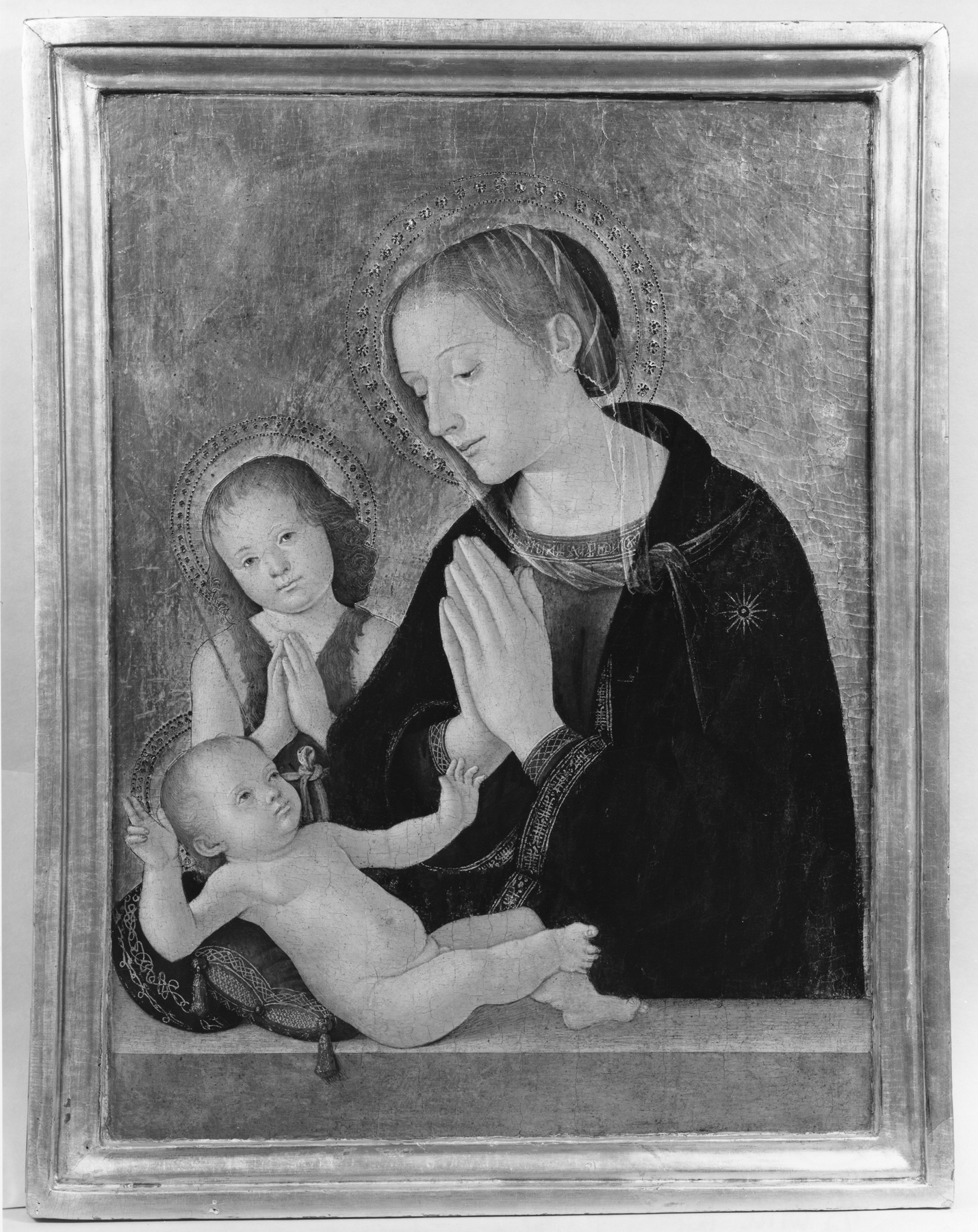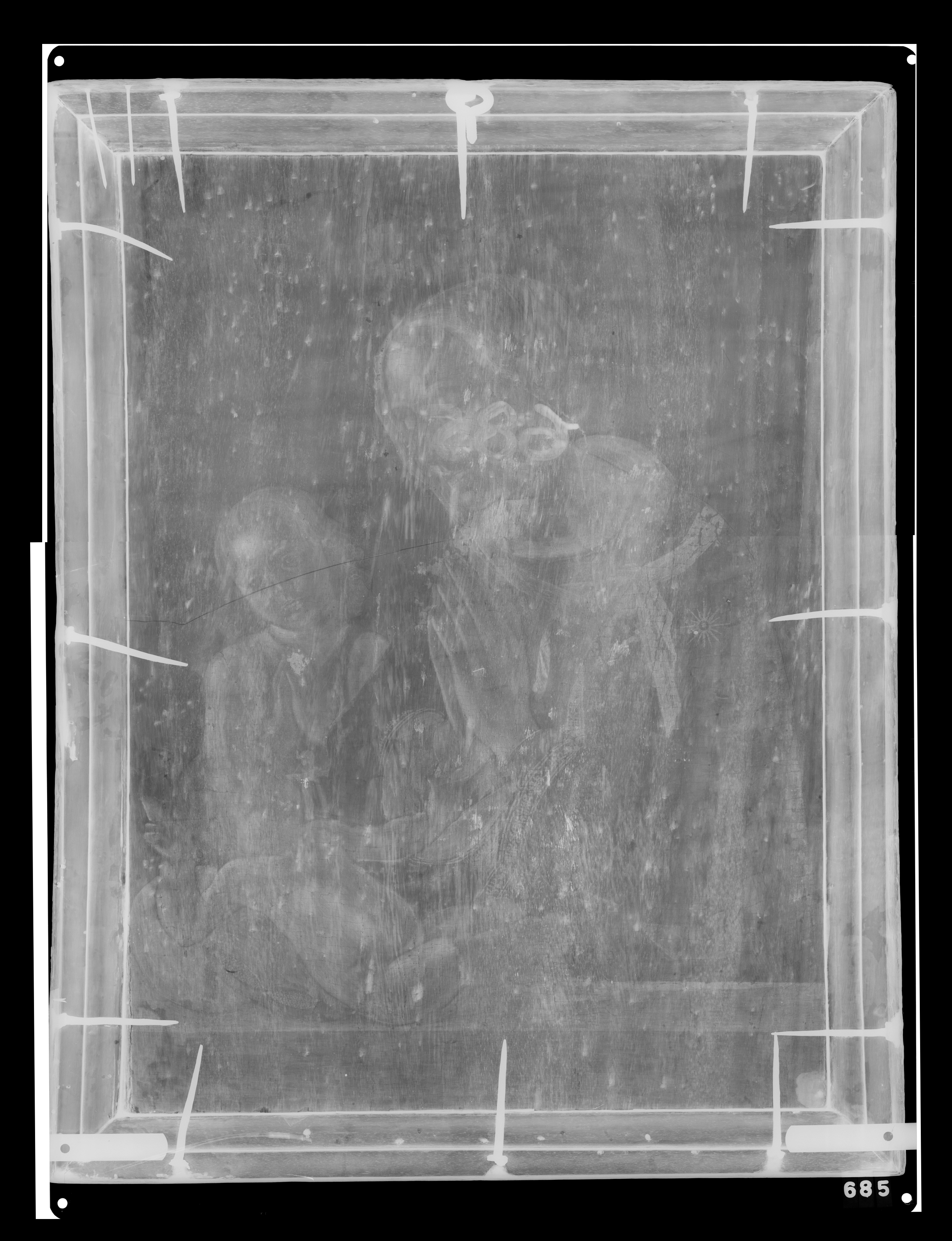Madonna and St. John the Baptist Adoring the Christ Child
(Renaissance Europe )
Antoniazzo Romano was the leading painter in Rome during the late 1400s and early 1500s. Head of a prolific workshop that executed frescoes and altarpieces for the city’s most important churches, he also specialized in the serial production of small-scale pictures of the Madonna and Child—such as the one seen here—which were intended for private devotion in domestic interiors. The Walters painting follows one of Antoniazzo’s most popular compositions. Known from at least ten surviving versions, it depicts the Madonna at half-length and adoring the Christ Child who lies before her on a stone parapet. Christ’s young cousin, John the Baptist, looks out toward the viewer as if inviting them to join in prayer. The figures are all placed against a flat background of gold leaf. By the late 1400s, gold backgrounds had gone out-of-fashion in many Italian cities but they remained popular in Rome, where they recalled the glittering mosaics in the city's famous Early Christian churches.
Provenance
Provenance (from the French provenir, 'to come from/forth') is the chronology of the ownership, custody, or location of a historical object. Learn more about provenance at the Walters.
Don Marcello Massarenti Collection, Rome [date and mode of acquisition unknown] [1897 catalogue: no. 326, as Umbrian School, about 1500]; Henry Walters, Baltimore, 1902, by purchase; Walters Art Museum, 1931, by bequest.
Geographies
Italy, Rome (Place of Origin)
Measurements
Painted surface H: 18 1/2 x W: 13 7/16 x D: 1 in. (47 x 34.2 x 2.5 cm)
Credit Line
Acquired by Henry Walters with the Massarenti Collection, 1902
Location in Museum
Not on view
Accession Number
In libraries, galleries, museums, and archives, an accession number is a unique identifier assigned to each object in the collection.
In libraries, galleries, museums, and archives, an accession number is a unique identifier assigned to each object in the collection.
37.685




